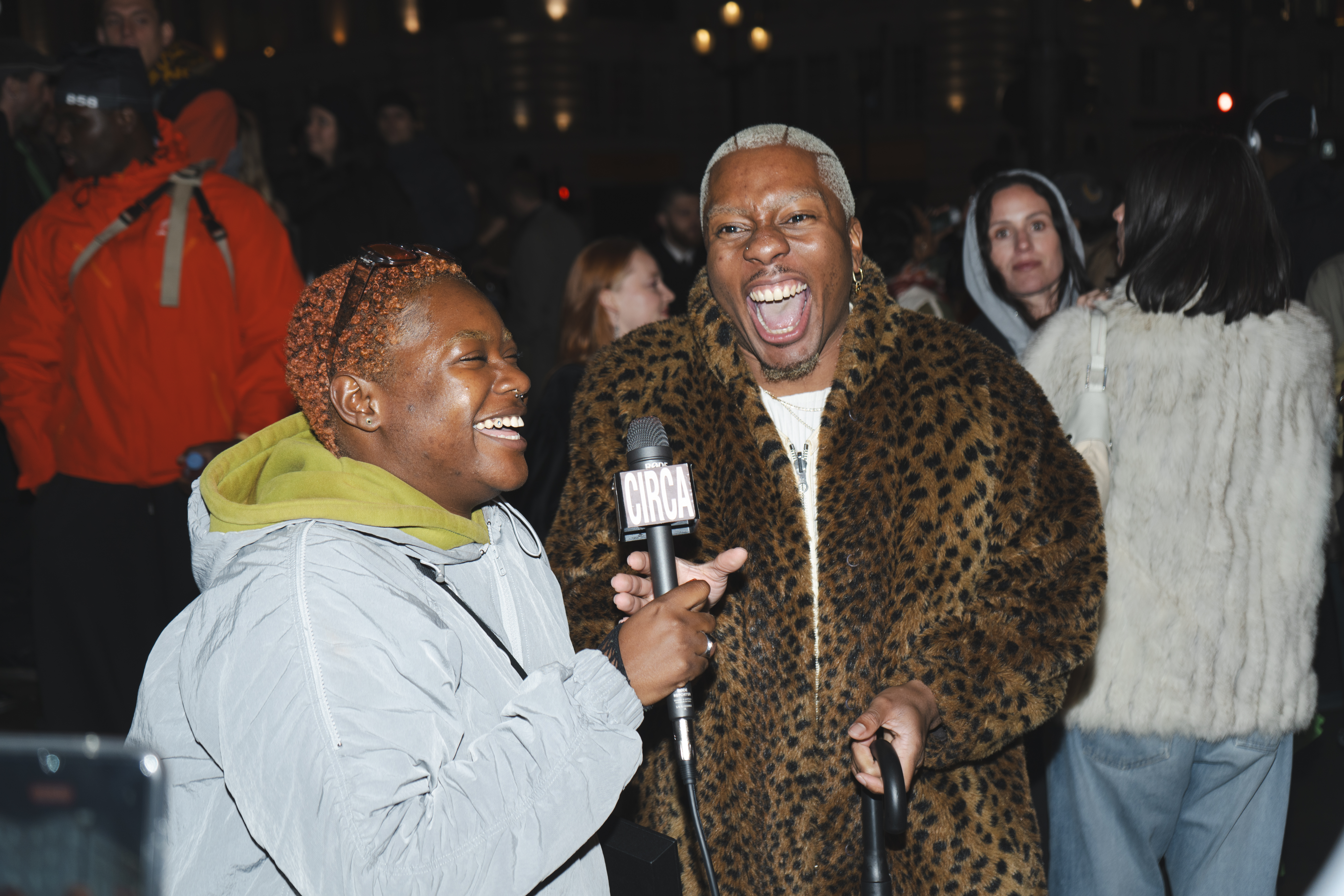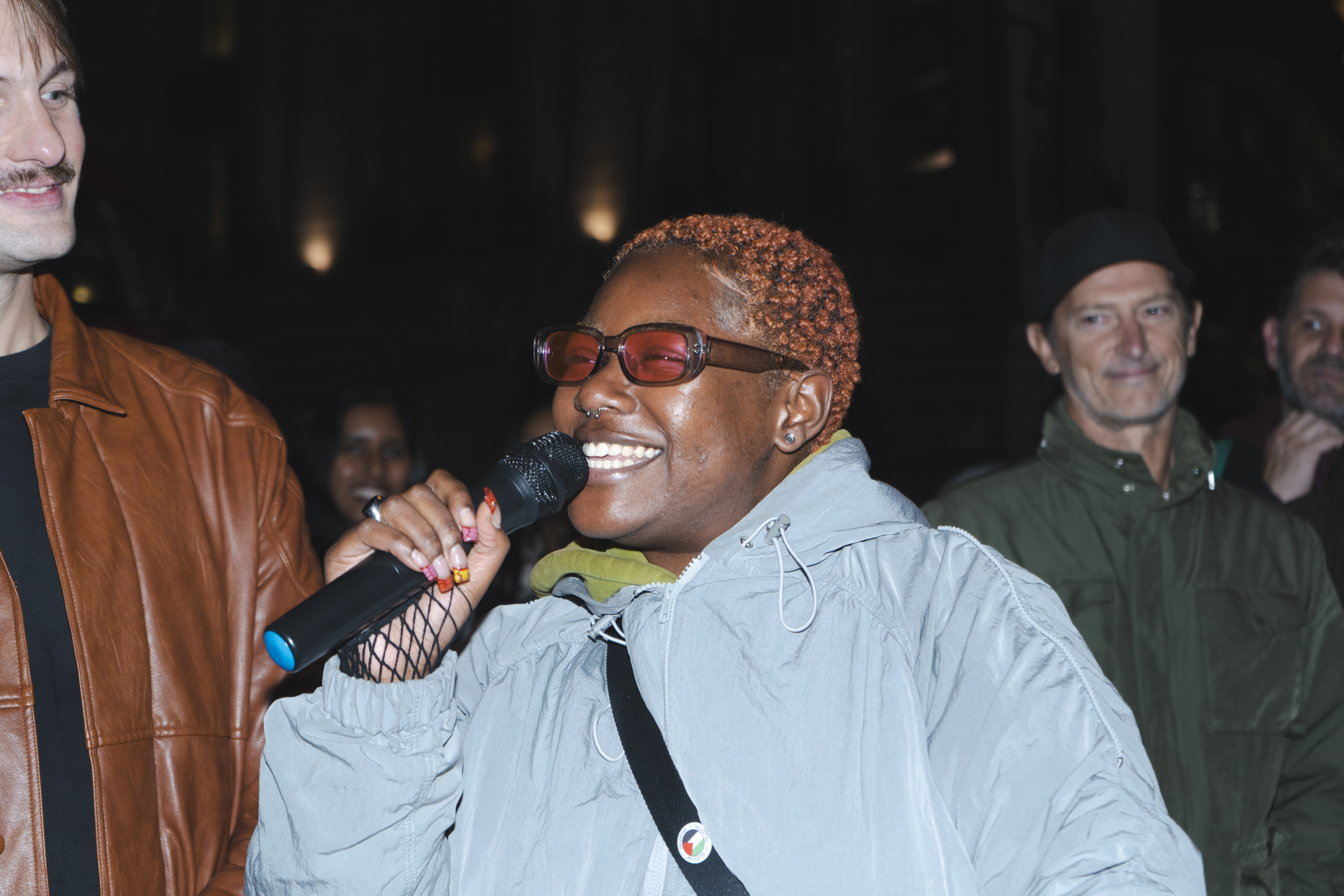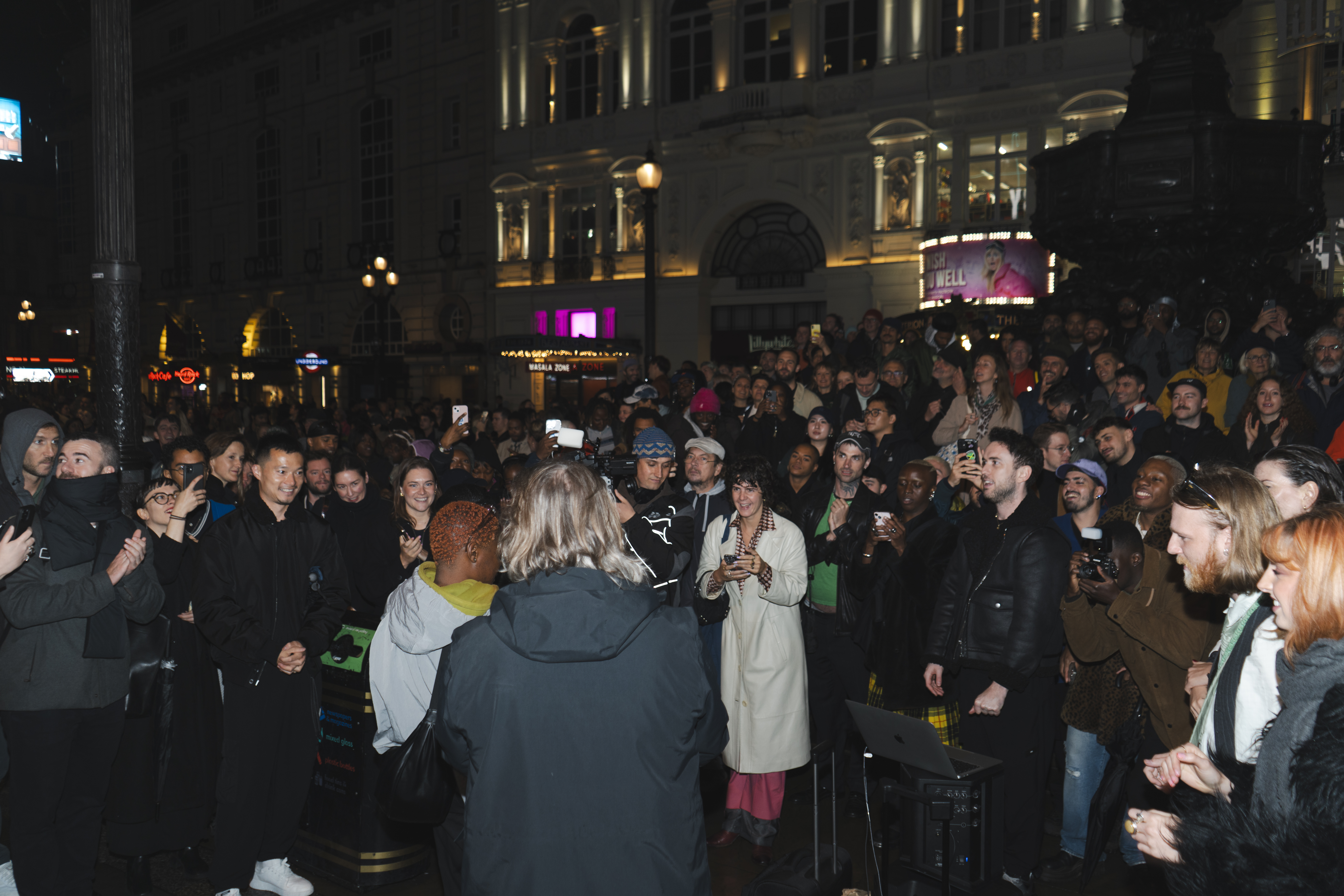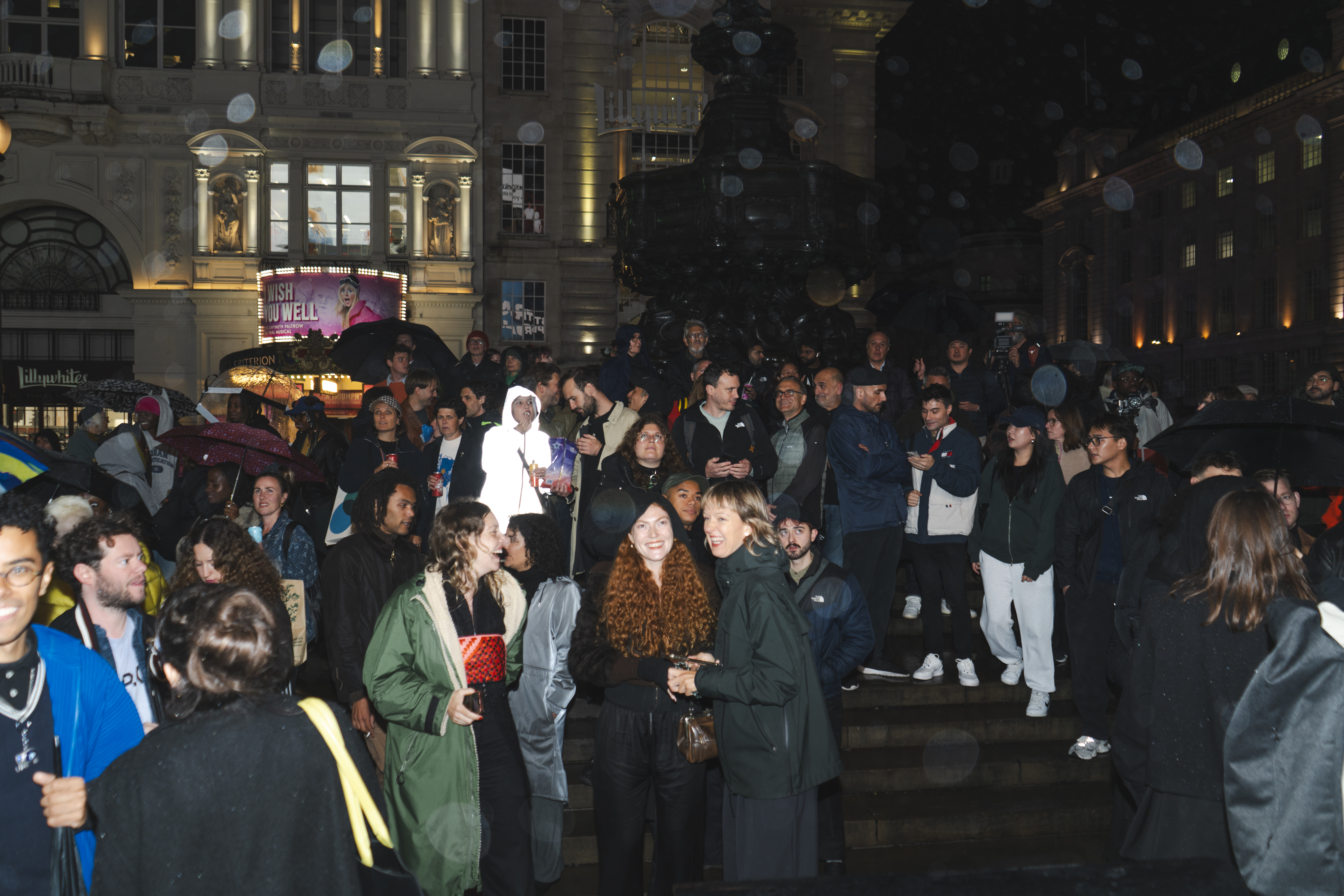Bernice Mulenga wins CIRCA PRIZE 2024 with a tribute to dance, intimacy and community
Interviewed by Vittoria de Franchis
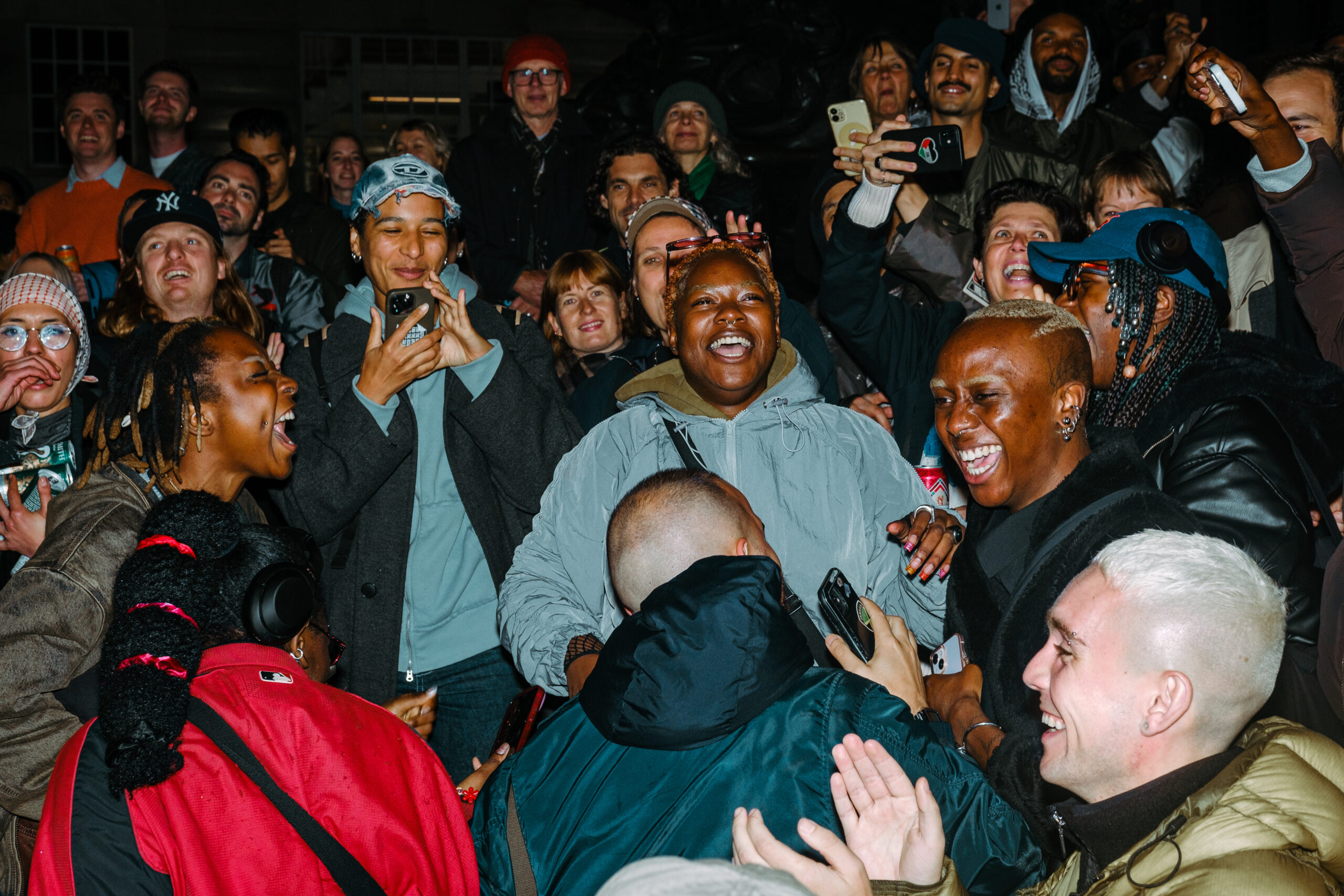
On October 1st 2024 on the iconic Piccadilly Lights, visual artist Bernice Mulenga was announced as the winner of CIRCA PRIZE 2024 for their film Let’s Move On— representing the “embodiment of freedom and going against the rules,” as a tribute of their “community and self, as one.” Selected from over 1,700 worldwide submissions responding to the call to <<Break Free>>, the 2.5 min piece represents a new step into moving image following nearly a decade, of documenting the fierceness and intimacy of Black and queer resilience—both on and off the dancefloor—in their series #friendsonfilm. Echoing the words of poet Thulani Davis “I don’t wanna riot / don’t wanna riot / it’s Saturday morning / and I wanna dance”, Bernice reflects the duality of fighting for freedom of Black communities while yearning for liberation through dance—an act that reconciles identity struggles. Marking their first award ever, we spoke with Bernice about CIRCA PRIZE 2024, their artistic vision, commitment to fostering community, the importance of intimacy and the materialisation of a dream.
[Vittoria de Franchis]: Dear Bernice, your work is deeply intertwined with your personal background, so I’d love to start our conversation there. Could you share what is your story and when did your interest for photography and moving image begin?
[Bernice Mulenga]: I was born in London from a Congolese mother. When we were younger, she used to shoot a lot of photos on film and I always loved looking through those pictures. I felt there was something deep inside that was like, “It’s so important to document ourselves in these moments.” Without those photos, I wouldn’t know parts of my family history in Congo or her journey before my life began. I grew up with a passion for film that I tried to pursue in any way I could.
I thought I wanted to work in fashion and studied fashion design, but I kept getting caught up in the business aspect of it so I dropped out. I just wanted to create. When I finally started working on my own projects, I discovered the beauty of slow, intentional processes. The intimacy of film photography—the pace of printing and putting together an album—really resonated with me. As I connected with incredible people, I noticed the exciting things they were doing, and I felt inspired to capture those moments. That’s how my series #friendsonfilm began in 2015. Even if it features a lot of other people I feel like it’s also an archive of my own journey. I was around 17 or 18 when I started, and now, at nearly 28, I can see how it has shaped and grown with me.
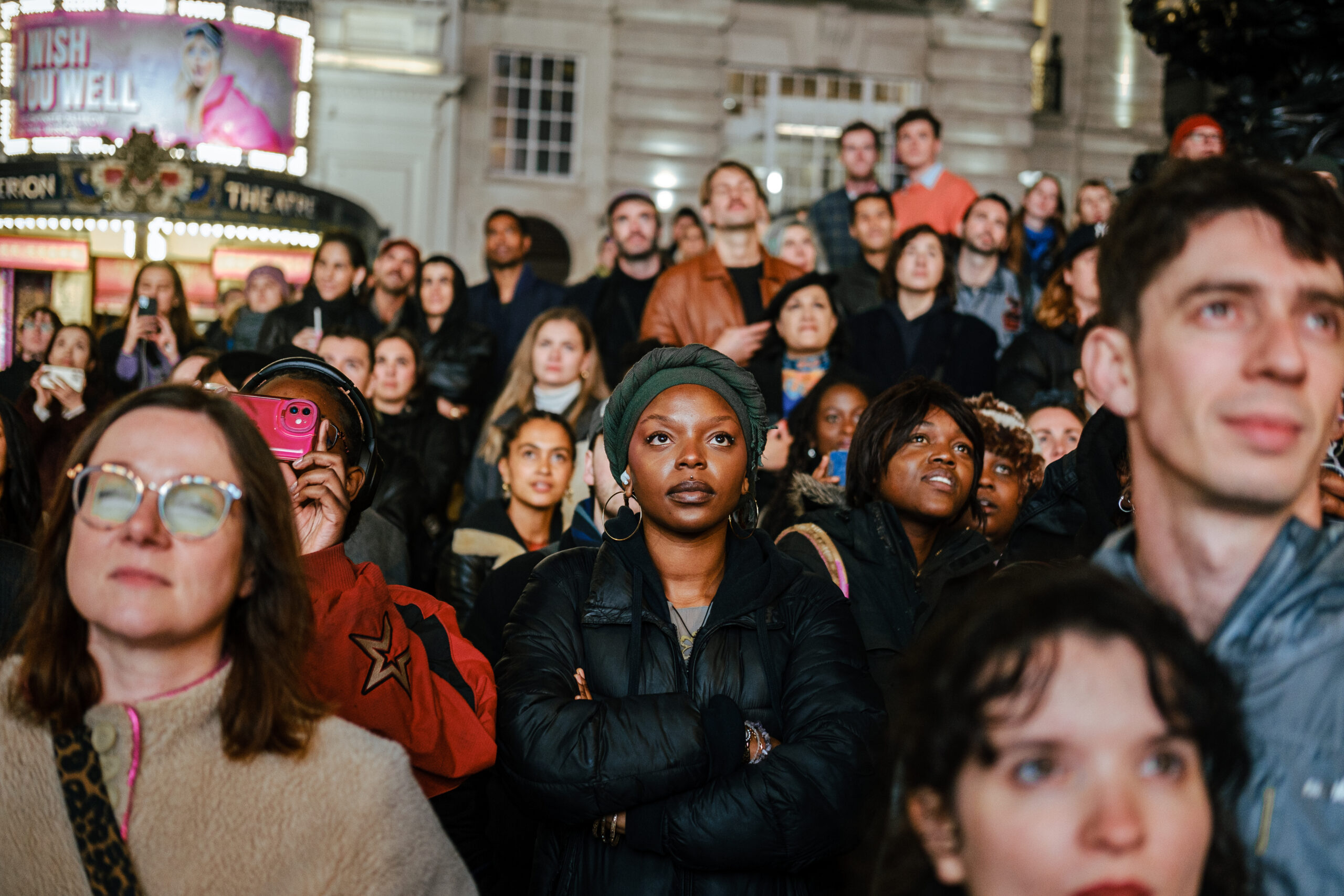
[VdF]: Pictures allow us to access both personal and shared memories, serving as a way to represent (or misrepresent) existence. Has the purpose of your work, which started as a way to document moments, evolved over time?
[BM]: I never really thought that #friendsonfilm would reach this level. I didn’t have a specific end goal; I just let it evolve. Building relationships has allowed me to move freely with my work. I’m honoured that people trust me to capture their stories and be part of their lives.
Interestingly, the nightlife aspect took off unexpectedly. At first, I found it frustrating when people labelled me as a nightlife photographer because it’s just one part of my practice. My work is about intimacy and the deeper connections we share, not just club photos. I think some people view it in a very simplistic way, but for me, it’s much more profound.
For a long I didn’t recognize how my work represented the community, but over time, I’ve come to understand its significance. People ask how I do this, and there’s no right answer. It’s not about gatekeeping; there’s no secret formula. I was simply living my life, enjoying it, and that’s what came through in my work. I feel honoured to be doing what I do after 10 years.
[VdF]: You mentioned me that ‘Let’s Move On,’ the film that won you the CIRCA PRIZE 2024, is your first video work. What inspired the creation of this piece?
[BM]: It’s interesting because even though this is my first film, I’ve wanted to create films for the last five years. When I saw the CIRCA PRIZE call, I had a lot of ideas already in mind, so the process was smooth. The film focuses mainly on London. It had to be, because that’s where I’m from, and despite everything, I love my city. It can be annoying, but I do love it. The footage is from different parties that I attended this year, some weren’t even formal parties; we were just together having a good time. That’s often how my work unfolds. I believe anything can be a dance floor—the kitchen, a bedroom, a garden, or the streets. I’m excited to finally share this work. I’ve started on a few other films as well, building on this idea that you can’t always tell who is who, which adds a sense of freedom, especially in today’s world where there’s a lot of pressure on appearance. I wouldn’t have been able to do any of this without all those years of building connections, trying, and simply being part of the experiences.
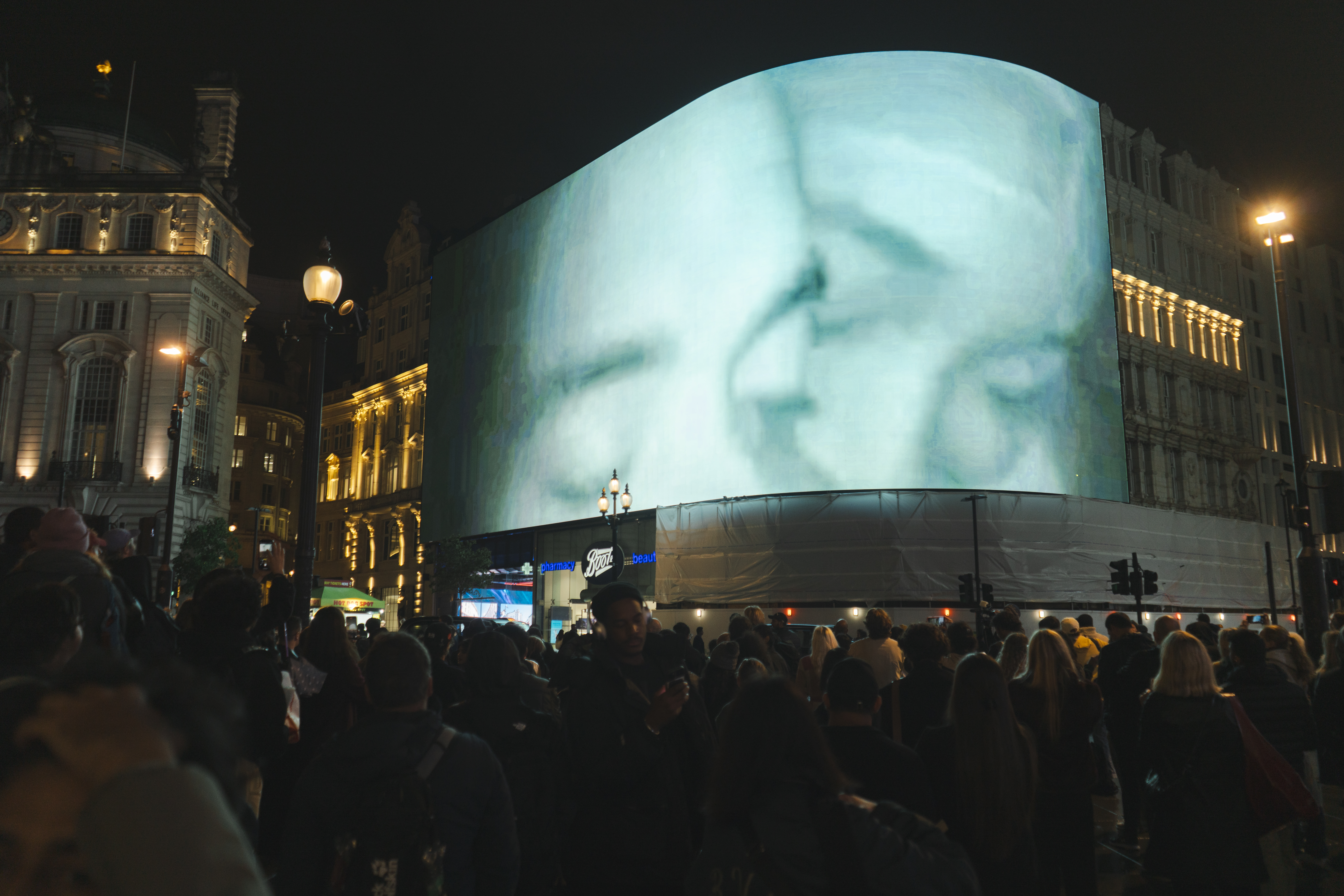
[VdF]: Artistic practices need to foster community, otherwise, we remain separated and never empower or emancipate ourselves. In ‘Let’s Move On,’ you capture the essence of a collective body, as individual figures blur into colour, movement, and light. How did you shoot this film?
[BM]: I shot it on a small camcorder, a kind of old-school camera that fits in my pocket. Using the camcorder adds something to the way people act around me. It’s discreet, and with film, you don’t see the results instantly, which takes the pressure off people. They’re not worried about perfection. Honestly, I’ve never strived for perfection. What does perfect even mean? I’ve always borrowed cameras or used cheap secondhand ones that break, and people from my community have been generous, lending me equipment on long loans. That’s saved me, especially in the last few years.
My practice is about capturing the moment, the feeling, and how people interact with me. It feels like a performance piece—especially in my culture, Congolese culture, where music and dancing are so central. It’s something that’s always been a part of my family and my community. We dance all the time. In a world where people don’t want Black, queer, trans folks to exist, it’s vital to keep these moments alive—together, away from the noise.
[VdF]: Even if you are very connected to music this is the first time your images intertwine with sound. How did you approach incorporating or experimenting with it in the film?
[BM]: At the beginning, I considered creating something original but didn’t have time. So, I decided to keep the original sounds from each clip and just mesh them together. You might notice some parts are sped up—like, if you were there, you’d recognize the song but realize it’s faster than you remember. I played with the timing intentionally, thinking about when to speed things up or slow them down. I also have to thank the DJs and dancers. Some of the dancers are professionals, but most of them are just people attending. I think that’s when I have the most fun—meeting people on the dance floor. Those are always my favourite people at parties.
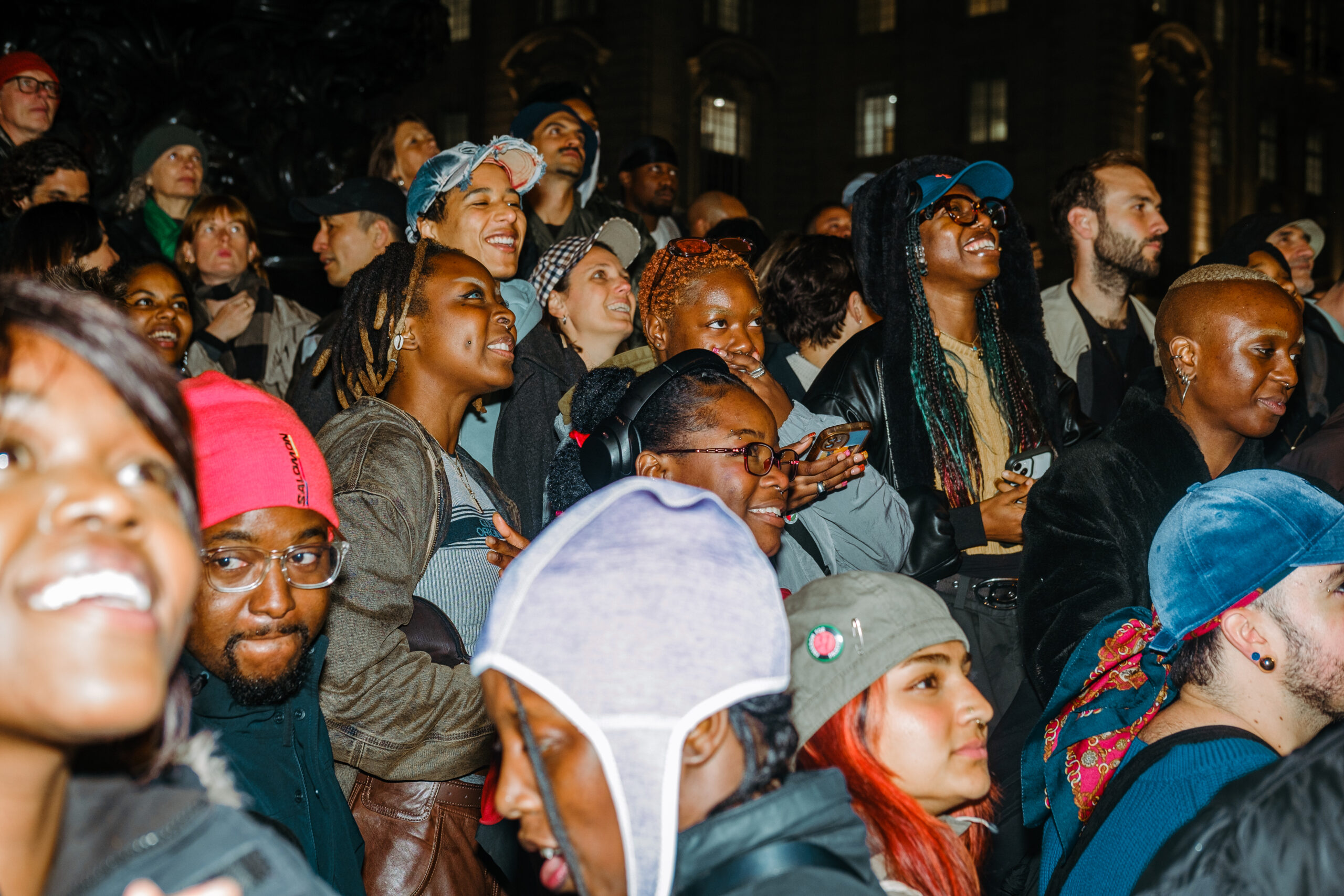
[VdF]: The sonic experience is inherently collective and embodied, especially when dancing with others and feeling that intimate closeness with people you may not know – a humanizing connection that is rare in other contexts. You often mention intimacy as central to your work. What sparked this focus?
[BM]: When I started, I was craving intimacy in my own life. Not in the way people usually think, as something sexual, but as an action, a connection. I was searching for it, and through #friendsonfilm I found it. Being invited into people’s worlds expanded my own. I started when I was young, and when you’re young, you’re more vulnerable. That vulnerability is part of how you build trust, and trust leads to intimacy.
For the longest time, I didn’t have the words to describe what #friendsonfilm was. In the last five years, I’ve finally been able to articulate it—things that last take time to build. I think that’s the essence of intimacy. To even achieve intimacy, you need closeness, trust, and reassurance. Once those are in place, walls break down, blockages dissolve, and that’s where freedom emerges. You need to feel free to be yourself. If I can’t feel that, then the space isn’t for me. I never want anyone in my work to feel like they can’t be themselves either. My work is about creating those spaces where people can express themselves fully.
[VdF]: You represent a very specific community—black, queer, trans—which has always struggled for freedom. Does your work consciously aims at portraying it?
[BM]: Absolutely. In the queer scene, black queer and trans people are still underrepresented, and we’re dealing with a lot. There has been progress, sure, but not enough. Globally, black trans people still face so many challenges. The music and electronic scenes can be exclusionary, but our community creates sacred spaces where we can just be. I’ve had people ask why I shoot this specific group of people and not others, and honestly, this is my world—these are the people I’m surrounded by every day. Why should I have to justify that when no one asks others the same question?
Even in the straight black community, there’s work to be done in making space for black queer and trans people. We don’t exist on the sidelines—we’re part of the world, and it’s nice to be included. So, I’m actively choosing who to show in my work because it’s simply important to me. It’s wild that in 2024, people still say, “We don’t have black queer photographers or black queer representation in art.” But it’s true. That’s why I keep showing everyday people in my work—they’re not celebrities, but to me, they are. The focus on fame and appearances needs to shift. We need to just enjoy life and be free and my community inspires me every day.
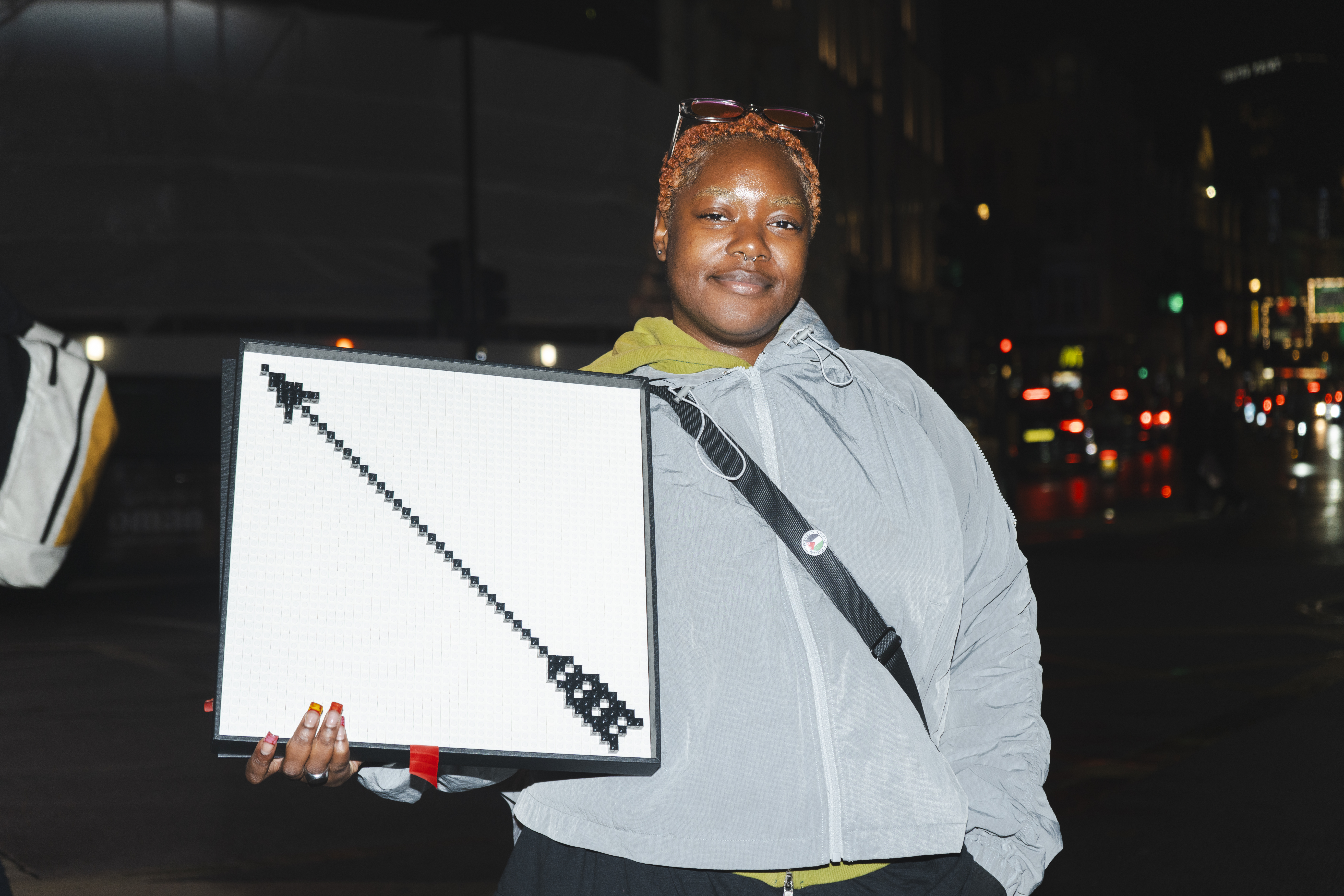
[VdF]: CIRCA PRIZE is your first award ever, what does winning this prize represent for you and the people who supported you over these years?
[BM]: Gosh, I think I’m still in shock that I’ve won it. I’m so honored and grateful but also proud of myself: I know what it’s taken to get here. This year has been about reconnecting with parts of myself after a lot of grief and loss. My friends have been so supportive, never doubting me even when I was unsure. From the moment I was announced as one of the finalists of CIRCA PRIZE 2024, everyone has been showering me with love, and it feels amazing to be overwhelmed by such a positive thing. It’s such a great feeling. And I really appreciate that it’s not just a “here you go, see you later” kind of prize. It really goes back to that community element, staying involved. That’s something that resonates with my practice—it’s about longevity, building a legacy, not just a quick moment of success. I’m really trying to build something lasting, and I’m happy that CIRCA will be part of that.
[VdF]: At last, I’d like to ask what is your wildest dream in life? If you could fantasize without restrictions.
[BM]: Big questions! I would say, right now, I’m definitely living part of my dream, which is surreal. But there’s still more I want. I want to have a free art school one day. It’s so important to me that everyone gets to play and enjoy art. Art isn’t just for a select few—it’s for everyone. Art is healing. Look at the lockdowns—what consistently brought people joy? It was art, whether through TV, painting, comedy—everything ties back to art. Art brings people together.
Anyone can be an artist. I’m serious. If you believe in yourself, stay consistent, and stay true, you can be an artist. But at the same time, I know not everyone in the world is able to enjoy life right now. And that bothers me. I wish we could just burn it all down and restart because the world is so far off from what it was supposed to be. We got this earth for free, and it’s chaotic. Something needs to change. Some of us can’t be free if not all of us are free. Let’s start there.
Bernice Mulenga (they/them) is a British-Congolese photographer with a distinct aptitude for archiving, documenting and interrogating the world around them. Their work centres around the search for intimacy. Primarily looking at themselves, the Black queer global/local community and the experiences found within them. This can be found in their ongoing photo series #friendsonfilm. An archive that has been growing since 2015 and continues to shape with time and space. Their work is an exploration of reoccurring themes surrounding movement, identity, sexuality, grief, darkness, bonds and kin.
Vittoria de Franchis is an independent curator, language researcher and writer operating between London and Berlin. Her practice delves into the intersection of sound, performance, moving image and non-formal educational formats, with a focus on the creation of speculative participatory contexts. Currently, she is part of the curatorial team at CIRCA and the Nicoletta Fiorucci Foundation. For many years, Vittoria has been in the directing team at the Milan-based cultural agency Threes Productions and the art and music festival Terraforma. Amongst her projects are the worldwide series of interdisciplinary happenings gggglllloooossssaaaa (2023 – ongoing), the platform on language research and experimentation Unknown Language (2024 – ongoing) and the residency Nuova Atlantide in Bomarzo, Italy (2020 – 2024). Her writings have been featured in Flash Art, 032C, Spike Art Magazine, Terraforma Journal, Resident Advisor and Zweikommasieben amongst others.

